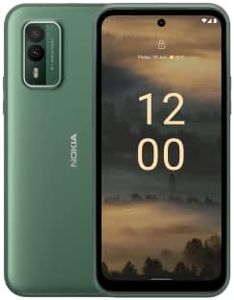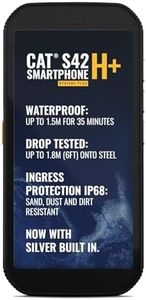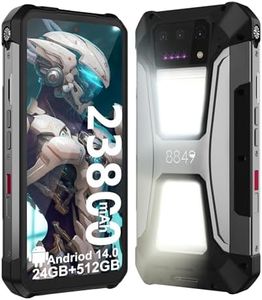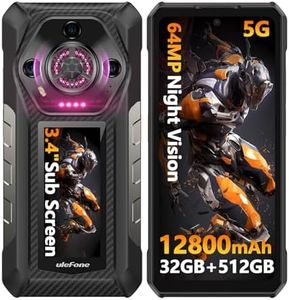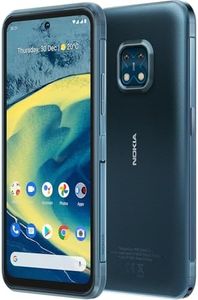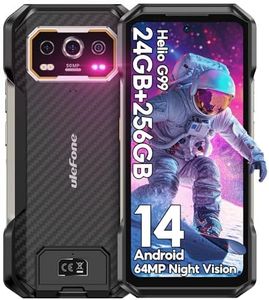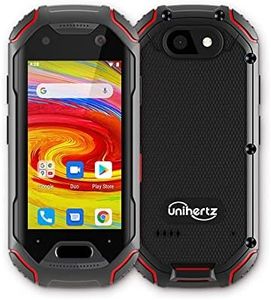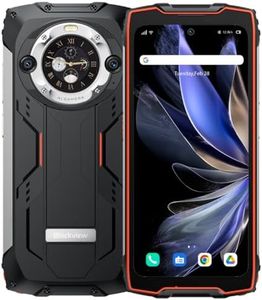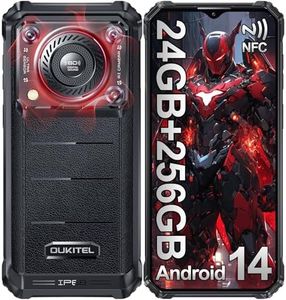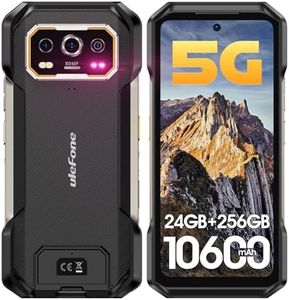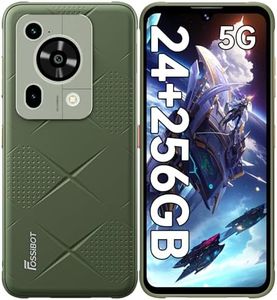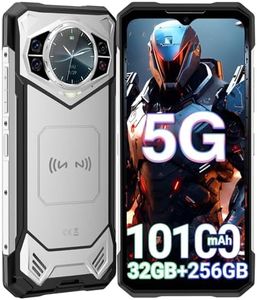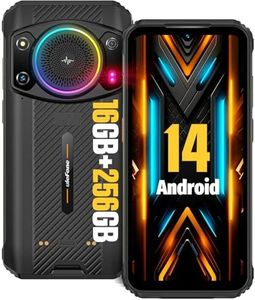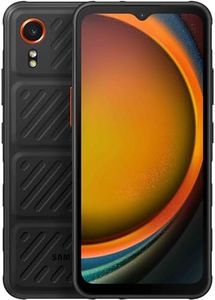We Use CookiesWe use cookies to enhance the security, performance,
functionality and for analytical and promotional activities. By continuing to browse this site you
are agreeing to our privacy policy
10 Best Rugged Smartphones
From leading brands and best sellers available on the web.By clicking on a link to a third party's website, log data is shared with that third party.
Buying Guide for the Best Rugged Smartphones
Rugged smartphones are designed for people who need a device that can withstand tough environments, whether that’s outdoor adventures, construction sites, or just a generally active lifestyle. Unlike regular smartphones, rugged phones focus on durability and reliability. When looking for the right rugged smartphone, it’s important to look beyond basic features like appearance and focus instead on the specs that make the phone sturdy and usable in challenging conditions. Think about where and how you’ll be using your phone most, as this will help you pick the right balance between durability, usability, and performance.Durability Ratings (IP and MIL-STD)This spec covers how well the phone handles water, dust, drops, and shocks. The IP (Ingress Protection) rating tells you how resistant the phone is to dust and water, with values like IP67 or IP68 indicating higher protection. The MIL-STD number (usually MIL-STD-810G or MIL-STD-810H) refers to military standard tests for things like shock, vibration, and extreme temperatures. If you need a phone for extreme use (submersion in water, high dust areas, or dropping onto hard surfaces), look for higher IP and MIL-STD numbers. If your usage is milder—like occasional outdoor use—a basic rating may be sufficient.
Battery LifeBattery life determines how long your phone runs before needing a recharge, which is crucial if you’ll be using your phone where outlets aren’t always available—like on job sites or long hikes. Batteries are measured in milliampere-hours (mAh), with higher numbers meaning longer potential use. If you spend days away from power, look for the highest battery capacity you can find. If your usage is more standard or you can recharge nightly, a moderate battery size will do.
Display ProtectionThe display protection spec tells you how scratch-resistant and shatterproof the screen is. Rugged phones often use specialized glass like Gorilla Glass, but the thickness and type can vary. If you’re likely to drop your phone or scrape it against rough surfaces, prioritize models with the toughest screen protection. For less extreme use, standard toughened glass may be fine.
Performance (Processor and RAM)This spec indicates how fast and smoothly the phone runs, which affects how well it can handle multiple apps, navigation, or work tasks. Processors and RAM vary: basic rugged phones may have lower specs suited for calls and texts, while more advanced ones can handle demanding apps. If you only need your phone for basic functions, you can choose a simpler processor and less RAM. But if you’ll use heavier apps or multitask often, look for higher performance levels.
Camera QualityCamera specs matter if you need to take lots of photos outside, for work documentation, or for personal use. This is usually measured in megapixels, but also look for other features like larger sensors or image stabilization. If you need sharp photos for reports or evidence, prioritize better cameras. If photography isn’t important, a basic camera will suffice.
Connectivity OptionsRugged phones have different connectivity features, such as support for 4G/5G, Wi-Fi, NFC, or even walkie-talkie capabilities. Think about what you need: if you require fast data in remote locations, strong cellular and Wi-Fi support is a must. For field work with contactless payments, NFC is helpful. If your environment favors radio communication, look for phones with push-to-talk features.
Physical Size and WeightBecause ruggedness often adds bulk, these phones can be heavier and larger than normal smartphones. If pocketability and ease of carrying are critical—like for hiking or cycling—choose a lighter, smaller model. For those who mainly use their phone on a job site where size and weight are less important, you can opt for heavier, more robust models.
Extra Features (Thermal cameras, sensors, etc.)Some rugged phones have extra features like thermal imaging cameras, additional programmable buttons, or specialized sensors (barometers, compasses). If you have a specific work need—like scanning heat leaks, taking measurements, or using the phone with gloves—look for these extras. If these use cases aren’t relevant to you, a simpler phone will do the job well.
